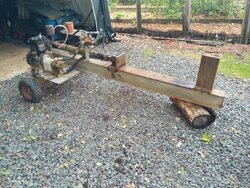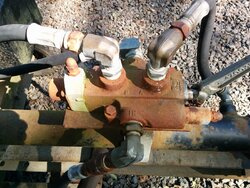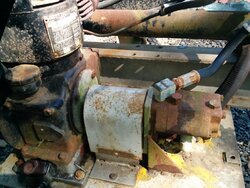Cheers,
Just came into an old / homemade log splitter. It has a 1955 Briggs and Stratton 8HP engine (I believe it is 8hp). The model is 14B. The top end was seized up, I freed it up with some WD-40 and Marvel Mystery Oil. Today I got the engine running and was able to split some old wood. However when I placed some Yellow Locust wood on the splitter... The ram could not force the wood to split on the wedge. I tried smaller pieces of Locust, with the same result.
I have never owned a splitter and so am unsure what the problem could be?
low fluid (BTW it seems like there is automatic transmission fluid in the tank, it is red and clean)?
After splitting the older wood, I did notice some fluid dripping out of the front on the ram. Could this be from trying to split the locust?
The valve seems to be working OK, the ram goes forward and reverse, stops automatically when reversed.
Could it be I need a newer more powerful engine?
I do not want to invest a huge sum of money... as I am retired and on a fixed income.
Splitter worked fine on old / light what appears to be maple.
All help advice appreciated.
Thanks
Jack D
Just came into an old / homemade log splitter. It has a 1955 Briggs and Stratton 8HP engine (I believe it is 8hp). The model is 14B. The top end was seized up, I freed it up with some WD-40 and Marvel Mystery Oil. Today I got the engine running and was able to split some old wood. However when I placed some Yellow Locust wood on the splitter... The ram could not force the wood to split on the wedge. I tried smaller pieces of Locust, with the same result.
I have never owned a splitter and so am unsure what the problem could be?
low fluid (BTW it seems like there is automatic transmission fluid in the tank, it is red and clean)?
After splitting the older wood, I did notice some fluid dripping out of the front on the ram. Could this be from trying to split the locust?
The valve seems to be working OK, the ram goes forward and reverse, stops automatically when reversed.
Could it be I need a newer more powerful engine?
I do not want to invest a huge sum of money... as I am retired and on a fixed income.
Splitter worked fine on old / light what appears to be maple.
All help advice appreciated.
Thanks
Jack D




